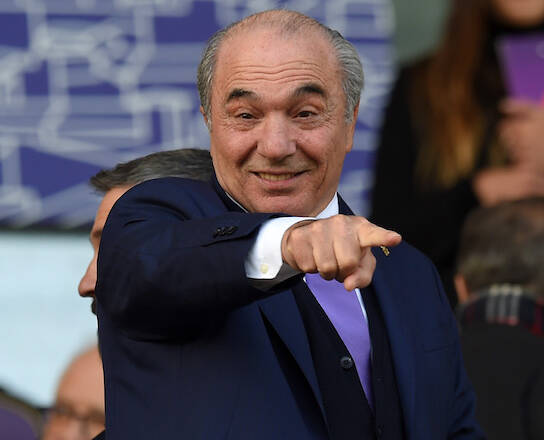He bought Fiorentina as a “depreciated” asset – a typical private equity deal – with the intention to make it more profitable by increasing its net revenues and, thus, its future valuation

The recent agreement between Fiorentina and Juventus for the transfer of Dusan Vlahovic, at age 22 one of the best players in the Italian league, has sparked a level of outrage among “Viola” fans not seen since the days of Roberto Baggio’s own move to Juventus in 1990.
It didn’t help that Vlahovic was the second recognizable Fiorentina player to leave for Juventus in the past two years, after national team starting forward Federico Chiesa. As Fiorentina owner Rocco Commisso, put it, the club has become the largest Juventus creditor in football, as terms for both transfers include delayed payments.
Commisso’s image among Italian football fans is one of a so-called “paisa’”, a pejorative that identifies manual laborers from Southern Italy that emigrated to the United States and from nothing – inexplicably for the ever-judgmental Italian bourgeoisie – made millions. Italians tend to treat him as a comedian, mocking his strong foreign accent and mannerisms. But Commisso is nobody’s dummy. He left Italy on a boat at 12 in 1961, when the Agnelli family already owned Juventus. Fast forward to 2022, and he’s worth more than Italian media tycoon – and richest man – Silvio Berlusconi.
Commisso graduated from Columbia University in New York – an Ivy League school – with a full scholarship and went on to earn an MBA from the same school, before working for several investment banks and then starting his own company – Mediacom – currently the fifth largest cable television provider in the United States. He’s a shrewd businessman with deep knowledge of the numbers – driven and cut-throat. He is perfectly capable of running circles around the Agnelli scions.
So what – ask the baffled, and outraged, Fiorentina fans – made him decide to sell two of the team’s best prospects, which – the fans believe – may compromise Fiorentina’s odds to finish in a Champions League spot this year? Why – they would like to know – does he not see that Champions League football is lucrative and would earn Fiorentina enough money to retain its talent going forward?
The answer may lie in his business plan.
While Commisso is a passionate soccer fan – and a decent former player having led Columbia into division 1 College soccer – It is likely that he bought Fiorentina as a “depreciated” asset – a typical private equity deal – with the intention to make it more profitable by increasing its net revenues and, thus, its future valuation. It was, needless to say, a business deal. And what’s wrong with that? As Fiorentina fans know all too well after the experience they had with former owner Vittorio Cecchi Gori, nobody can afford to run a business at a loss for too long.
With the club not owning any real estate – as the Franchi stadium is property of the city of Florence – Commisso must know all too well its only assets are its players, for now. And when one of these assets increases 37 times in value – Fiorentina bought Vlahovic from Partizan Belgrade for a meager 2 million euros in 2017 – the case for selling is pretty clear.
While Commisso’s medium-term plan remains uncertain at this point, which may be infuriating for Fiorentina fans, it is likely that his profit-making operation will go beyond “player trading,” which long-term does not offer the stable revenues a company needs to truly increase its real market value. Player trading is by definition more volatile, though some teams – like Udinese – have made it into a successful business model.
By looking at some of Commisso’s interviews and public statements, one can easily learn that he’s focused on building a new stadium and on the potential commercial real estate operation associated with it. It is not hard to imagine that he sees the city of Florence as the real intangible asset, and that he is looking at boosting the club’s value by investing heavily in infrastructure – especially if he intends to stay there for a few years. That, however, may be a tall order as his fellow American former AS Roma owners discovered – as Italy’s bureaucracy can prove to be an insurmountable obstacle.
For the time being, he certainly wasn’t going to miss the opportunity for his company to make a 35x gross profit with a single operation, and to earn a total of 125 million euros in gross profit in two years – Chiesa was sold for approximately 50 million euros. And it is particularly telling than after selling Chiesa, his team is doing better this year than last year, while Juventus – who bought the player and indebted itself heavily to do so – is currently struggling in fifth place.
Only time will tell if he is able to attain his goal, or if he instead ends up getting frustrated by Italy’s notoriously slow decision-making process. But it is highly likely that whichever the direction the club takes, Fiorentina is unlikely to ever be back in the dire straits where its past three owners – one of which triggered a bankruptcy and dragged the club all the way down to fourth division – left it.

